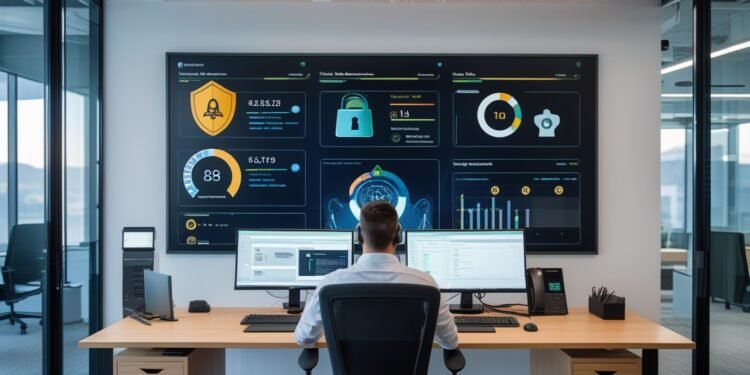By Marc Mawhirt
MSPs face growing threats—and even bigger opportunities. Here’s how they move clients from denial to resilience, protect data from ransomware, and turn rapid recovery into a business win.
The Dangerous “It Won’t Happen to Us” Belief
Small and mid-sized businesses (SMBs) often think they’re too small to be targeted by cybercriminals. But that belief is exactly what makes them vulnerable—and for Managed Service Providers (MSPs), that’s a dangerous starting point.
The mindset of “we’re not big enough to be on a hacker’s radar” leads to underinvestment in cybersecurity. No endpoint detection. No reliable backup strategy. No incident response planning. MSPs are left holding the bag when disaster strikes—and clients ask why more wasn’t done.
MSPs who want to thrive must take a proactive approach: break the complacency loop, educate clients, and build trust through preparation.
Why MSPs Are Prime Targets for Ransomware
Cybercriminals are getting smarter. Rather than attack individual businesses, they’re targeting MSPs directly—because compromising one MSP can give them access to dozens or hundreds of downstream clients.
Recent breaches of Kaseya, SolarWinds, and ConnectWise products have shown how vulnerable MSPs can be to supply chain attacks. Ransomware-as-a-service groups are weaponizing zero-day vulnerabilities to infiltrate tools commonly used by MSPs. And the outcome is often the same: massive data encryption and chaos.
Being an MSP today means accepting that you are the bullseye—and your clients are the collateral damage.
Air-Gapped and Immutable Backups: The Non-Negotiable Layer
Traditional backup strategies are no longer enough. Ransomware variants now seek out backups and encrypt them too. That’s why the most resilient MSPs implement air-gapped and immutable backup solutions.
- Air-gapped backups keep copies of client data physically or logically disconnected from the main network.
- Immutable backups cannot be altered, deleted, or encrypted by attackers.
Together, they create a last line of defense that can save a business from permanent data loss. And in the eyes of a client post-breach, that makes your MSP services priceless.
Rapid Recovery as a Competitive Advantage
Security is essential—but recovery is the differentiator. When MSPs can bring a client’s systems back online in minutes or hours, not days, they stand out from the competition.
Disaster Recovery as a Service (DRaaS) isn’t just an upsell. It’s a promise. A guarantee of business continuity that turns fear into trust and transforms cybersecurity into a selling point.
MSPs should market their rapid recovery capabilities aggressively. Show SLAs. Offer demos. Share recovery time stats. In a world where downtime costs thousands per minute, speed wins business.
From Objection Handling to Education
MSPs often face objections like “We’ve never had an incident,” or “We can’t afford that right now.” The key is to reframe these conversations.
Instead of leading with fear, lead with outcomes:
- How many hours would downtime cost?
- What does peace of mind look like?
- What would it cost to lose client trust or regulatory compliance?
Frame your MSP as not just a service provider—but a business continuity partner. The best MSPs aren’t selling protection. They’re selling stability, speed, and survival.
Final Thought
The “It won’t happen to us” mindset is the biggest threat to SMBs—and the biggest opportunity for MSPs. By educating clients, implementing modern defenses, and turning recovery into a competitive edge, MSPs can grow stronger than ever. Not in fear. But in confidence.


















